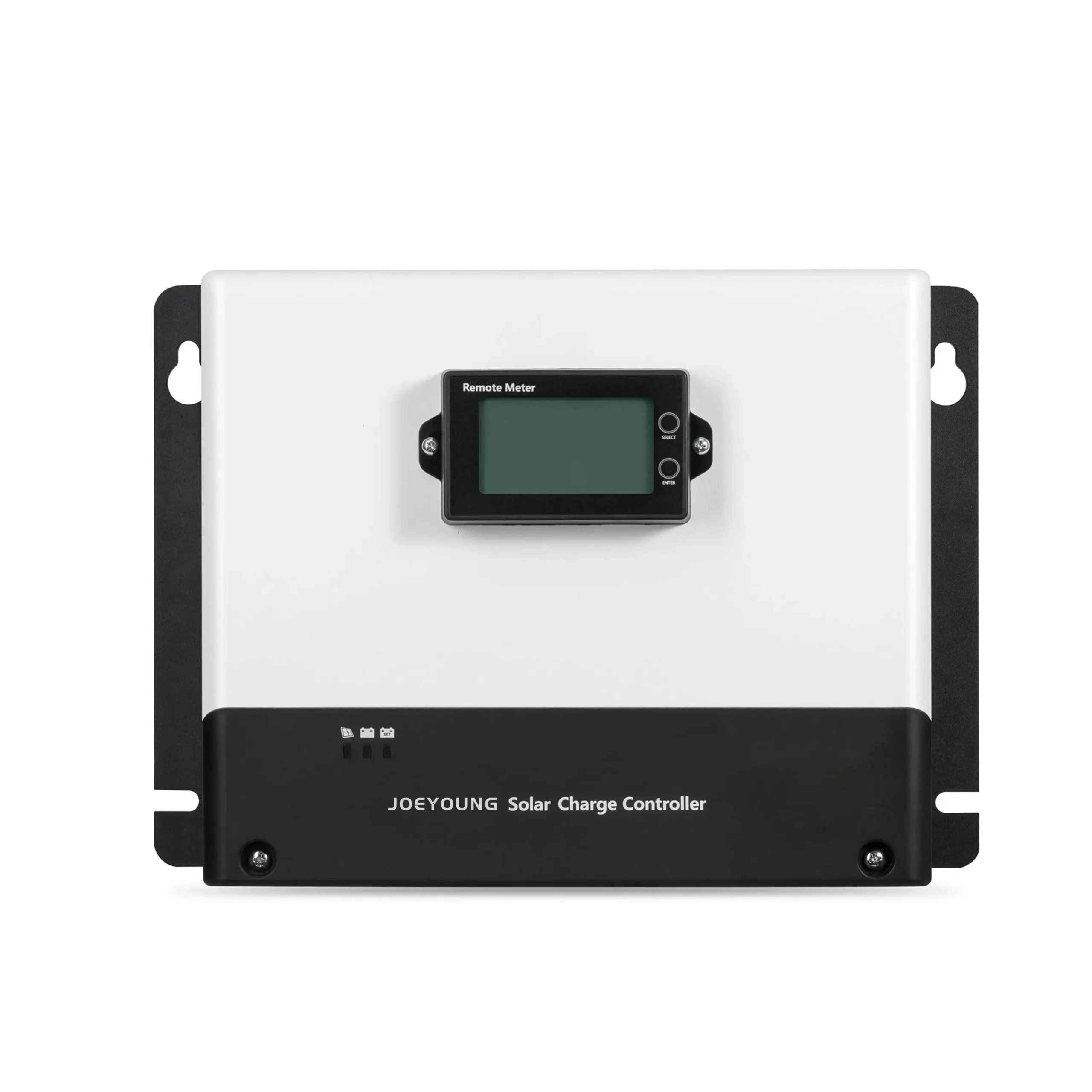





MPPT Solar Charge Controller for Lithium Battery in Caravans and Street Lights
- DMC 48 Series, PV150~250V, 60-100A, 12/24/36/48Vdc, MPPT Solar Charge Controller
This solar charge controller is designed for lithium batteries, wind turbines, RVs and street lights, efficiently utilizing solar energy! Adopting advanced MPPT technology, it intelligently adjusts the charging current and voltage to ensure that the battery is always in the best charging state. Supports a variety of energy inputs to flexibly respond to different scenarios. Built-in multiple protection mechanisms to effectively prevent over-charging, over-discharging and short-circuit problems, to ensure the safety of electricity consumption. Compact and lightweight, easy to install, widely used in RV travel, street lighting and other fields.
Efficiency Improvement
Battery compatibility, Compatible with lithium LiFePO4/lead-acid/flood
Data and Detection
Charging mode, current limit charging, control charging size.
Protection function
Communication and Recognition Function

- With LCD Display
LED fault indicators and an LCD screen which can display abnormality information help users to quickly identify system faults.

- 150/250V High PV Input Voltage
Supports high PV input voltages up to 250V, making it suitable for diverse solar panel configurations and ensuring efficient energy capture in various conditions.
- 85/100A MPPT Charger
The MPPT charger can handle charging currents up to 100A, ensuring rapid and efficient charging for large battery banks in high-power solar installations.
| Model | SR-MC4860N15 | SR-MC4870N15 | SR-MC4860N25 | SR-MC4870N25 |
|---|---|---|---|---|
| System voltage | 12V/24V | 36V/48V | ||
| Static power consumption | 0.54W | |||
| Maximum input voltage of solar energy (25℃) | 150V | 250V | ||
| Voltage Range at MPP (Maximum Power Point) | Battery voltage +2~ 120V | Battery voltage +2~ 180V | ||
| Charging current | 60A | 70A | 60A | 70A |
| Solar panel power (12V battery) | 800W | 920W | 800W | 920W |
| Solar panel power (24V battery) | 1600W | 1840W | 1600W | 1840W |
| Solar panel power (48V battery) | 3200W | 3680W | 3200W | 3680W |
| Support battery type | Lead-acid batteries, colloidal batteries, open-ended batteries, lithium batteries | |||
| Temperature compensation coefficient | -3mV/℃/2V (default, settable lead-acid); no temperature compensation for lithium battery. | |||
| Operating temperature range | -35℃-60℃ | |||
| Humidity | 95%, no condensation | |||
| Protection grade | Ip32 | |||
| Weight | 3.6kg | |||
| Communication mode | TTL(3.3V)/RS485/Bluetooth Module | |||
| Product Dimensions | Conventional: 266*194*119mm | MC4: 266*226*119mm | ||
| Terminal blocks | 35mm²/2AWG | |||
| System voltage | 12V/24V | 36V/48V | ||
| Static power consumption | 0.54W | |||
| Maximum input voltage of solar energy (25℃) | 150V | 250V | ||
| Voltage Range at MPP (Maximum Power Point) | Battery voltage +2~ 120V | Battery voltage +2~ 180V | ||
| Charging current | 85A | 100A | 85A | 100A |
| Solar panel power (12V battery) | 1100W | 1320W | 1100W | 1320W |
| Solar panel power (24V battery) | 2200W | 2640W | 2200W | 2640W |
| Solar panel power (36V battery) | 3300W | 3960W | 3300W | 3960W |
| Solar panel power (48V battery) | 4400W | 5280W | 4400W | 5280W |
| Support battery type | Lead-acid batteries, colloidal batteries, open-ended batteries, lithium batteries | |||
| Temperature compensation coefficient | -3mV/℃/2V | |||
| Operating temperature range | -35℃-60℃ | |||
| Humidity | 95%, no condensation | |||
| Protection grade | IP32 | |||
| Weight | 5.7kg | |||
| Communication mode | TTL(3.3V)/RS485/Bluetooth Module | |||
| Product Dimensions | 314*227*121 (mm) | |||
| Terminal blocks | 35mm²/2AWG | |||
It can provide precise charging control according to the characteristics of lithium batteries, including the use of appropriate charging algorithms (such as three-stage charging, etc.) to protect lithium batteries from overcharging and under-discharging.
The role is mainly reflected in the regulation and control of the wind turbine output power, to ensure that the power is transmitted to the battery or other loads in a stable and appropriate manner. For example, it can monitor and adjust the input voltage and current to meet the charging requirements of the battery, or distribute the power to different loads according to the actual demand, so as to realize the effective use of energy.
Efficient charging, intelligent control, space saving.








